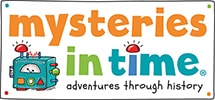World War 2 Facts for Kids
1. When did World War 2 start?
2. Rationing
- Rationing was introduced in Britain in 1940 and lasted until 1954, well after the war ended. This system ensured fair distribution of scarce items like food, clothing and fuel, and it led to innovative recipes using fewer ingredients.
3. The Blitz
The Blitz was a significant event in Britain during World War II, involving heavy and frequent bombing raids by Germany from September 1940 to May 1941. Major cities including London, Coventry and Liverpool were targeted, causing significant destruction.
4. Operation Pied Piper
The Operation Pied Piper was the codename for the organised evacuation of vulnerable people from cities and towns in Britain to rural areas to protect them from bombing raids. Initiated in September 1939, it was the largest internal migration in Britain’s history, relocating around 1.5 million people, primarily children.
5. Evacuation of Children
Children evacuated were mostly under the age of 15 and many travelled unaccompanied by their parents. They were often tagged like parcels, with their name, home address, school and destination marked on a label around their neck. The evacuees were sent to parts of the UK that were safer from the risk of bombing, such as the countryside in Wales or East Anglia. Some were even sent to countries like Canada, Australia and the United States.
6. Women in the workforce
In response to the war, Britain saw a significant rise in women’s participation in the workforce. As men left to fight, women took over roles in factories, farms and other sectors, playing a crucial part in the war effort.
7. Code breaking
Polish cryptologists played a critical role in breaking the Enigma code system used by Nazi Germany during World War II. Their pioneering work was shared with British and French intelligence, ultimately contributing significantly to the successful efforts at Bletchley Park in the UK and aiding the Allied victory.
8. D-Day
The invasion of Normandy on 6th June 1944, known as D-Day, was a crucial event during the war. This successful invasion by the Allied forces marked the beginning of the end for Germany’s control in Western Europe.
9. The Atomic Bomb
World War II culminated in the first and only use of nuclear weapons in warfare, with the United States dropping atomic bombs on the Japanese cities of Hiroshima and Nagasaki in August 1945. This unprecedented action prompted Japan’s surrender, thus marking the end of the war, but also sparking a new era of nuclear technology and arms race.
10. The United Nations
The war’s end witnessed the birth of the United Nations in October 1945, an international organisation aiming to maintain world peace and security. The establishment of this body symbolised the global community’s commitment to preventing a recurrence of such devastating conflict.

